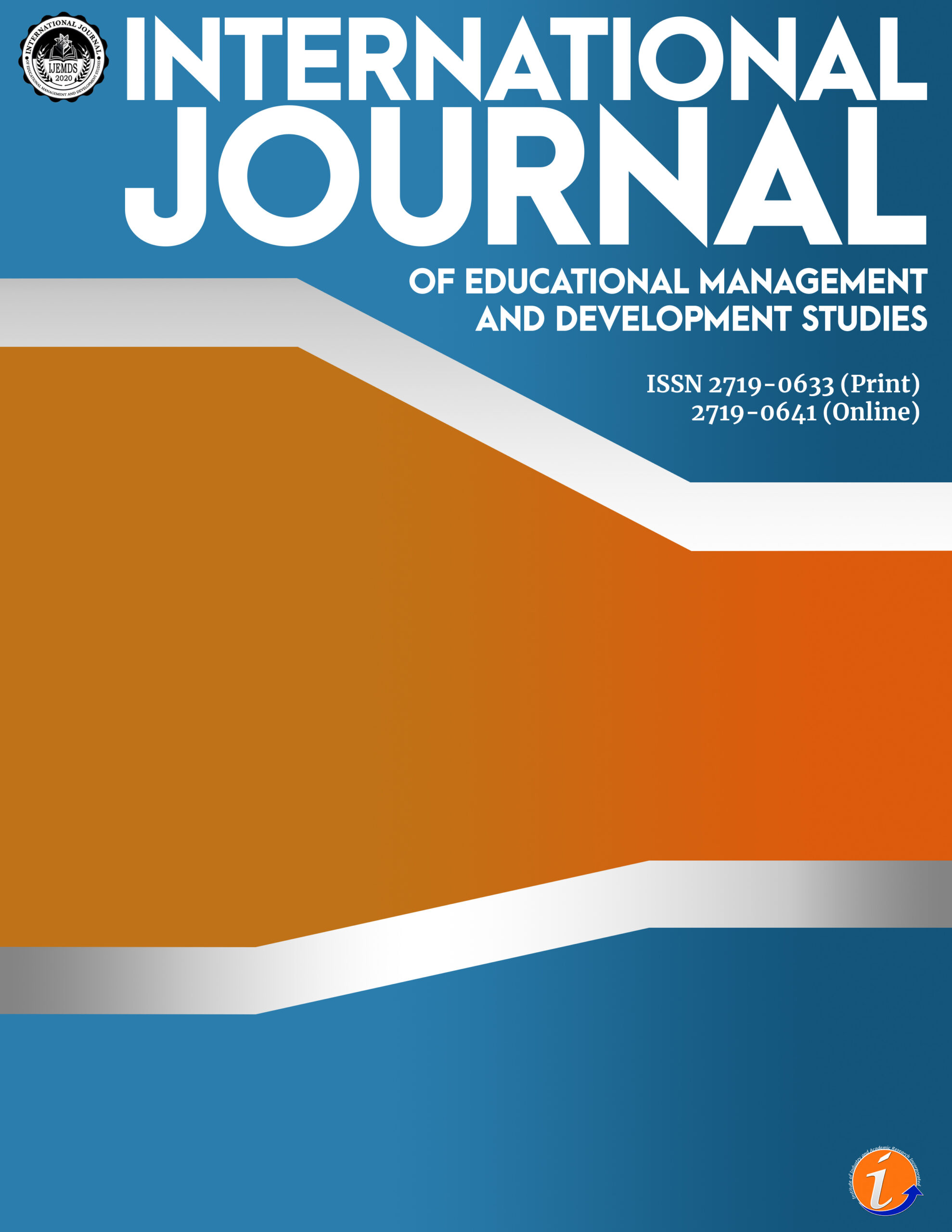The main purpose of the study was to test the effectiveness of the learner's intervention booklet (LIB) in improving the skills in handicrafts of grade 7 students through descriptive-experimental research design. The data were gathered from thirty (30) struggling students as purposively chosen respondents using survey questionnaire and LIB. The results showed that the LIB was effective because there was an increase in the scores of the students in their practice tasks and assessments. Furthermore, there is no significant difference between the first assessment and second assessment scores after the use of the two intervention booklets. This clearly indicates that the utilization of the LIB resulted to a significant improvement in the skills of Grade 7 struggling students. Thus, this study concludes the use of the LIB be sustained. Therefore, TLE teachers advocate for the development of learners’ intervention materials not only in handicraft but also in other areas of TLE. The intervention materials can be given on the planned date, and the intervention can be offered immediately after each class. The teacher has to recognize the struggling students so that the remediation is given in a timely and effective manner.
learner’s intervention booklet, handicraft, technology and livelihood education, TLE
Merryl Joyce S. Chozas. Corresponding author. Master of Arts in Education, Teacher 1, San Pablo City Integrated High School
Zenaida M. Cuenca. Research Advisor, Retired Assistant Professor IV, Laguna State Polytechnic University- San Pablo City Campus
Althoff, S. E., Linde, K. J., Mason, J. D., Nagel, N. M., & O’Reilly, K. A. (2007). Learning Objectives: Posting & Communicating Daily Learning Objectives to Increase Student Achievement and Motivation. Online Submission. https://files.eric.ed.gov/fulltext/ED496125.pdf
Asio, J. M. R., & Jimenez, E. C. (2020). Effect of Remediation Activities on Grade 5 Pupils’ Academic Performance in Technology and Livelihood Education (TLE). Pedagogical Research, 5(4), em0075. https://doi.org/10.29333/pr/8464
Bleses, D., Jensen, P., Højen, A., Slot, P., & Justice, L. (2021). Implementing toddler interventions at scale: The case of “We learn together”. Early Childhood Research Quarterly, 57, 12-26. https://doi.org/10.1016/j.ecresq.2021.04.008
Calhoun, C., Sahay, S., & Wilson, M. (2021). Instructional Design Evaluation. Design for Learning. https://edtechbooks.org/
Curry, J. H., Johnson, S., & Peacock, R. (2021). Robert Gagné and the systematic design of instruction. Design for Learning. https://edtechbooks.org/
Dahar, M. A., & Faize, F. A. (2011). Effect of the availability and the use of instructional material on academic performance of students in Punjab (Pakistan). Middle Eastern Finance and Economics, 11, 15-26.
De Borja, Sharmane L (2005). “Effects of E-Learning on Academic Performance of Junior” Unpublished Master Thesis in Batangas State University.
Dumigsi, M. P., & Cabrella, J. B. B. (2019). Effectiveness of strategic intervention material in Mathematics as remediation for grade 9 students in solving problems involving quadratic functions. Asian Journal of Education and Social Studies, 5(1), 1-10. DOI: 10.9734/ajess/2019/v5i130137
Dunlosky, J., Rawson, K. A., Marsh, E. J., Nathan, M. J., & Willingham, D. T. (2013). Improving students’ learning with effective learning techniques: Promising directions from cognitive and educational psychology. Psychological Science in the Public Interest, 14(1), 4–58. https://doi.org/10.1177/1529100612453266
Espinosa, A. A. (2014). Strategic intervention material-based instruction, learning approach and students’ performance in chemistry. International Journal of Learning, Teaching and Educational Research, 2(1). http://ijlter.org/index.php/ijlter/article/view/10
Gentry, R., Sallie, A. P., & Sanders, C. A. (2013). Differentiated Instructional Strategies to Accommodate Students with Varying Needs and Learning Styles. https://files.eric.ed.gov/fulltext/ED545458.pdf
Kim, J. S. (2019). Making every study count: Learning from replication failure to improve intervention research. Educational Researcher, 48(9), 599-607. https://doi.org/10.3102%2F0013189X19891428
Kurt, S. (2020). How Can We Align Learning Objectives, Instructional Strategies, and Assessments? https://educationaltechnology.net/
Langberg, J. M., Epstein, J. N., Girio-Herrera, E., Becker, S. P., Vaughn, A. J., & Altaye, M. (2011). Materials organization, planning, and homework completion in middle-school students with ADHD: Impact on academic performance. School Mental Health, 3(2), 93 101. https://doi.org/10.1007/s12310-011-9052-y
McTighe, J., & O’Connor, K. (2005). Seven practices for effective learning. Assessment, 63(3).
Mart, C. T. (2011). How to Sustain Students’ Motivation in a Learning Environment. Online submission. https://files.eric.ed.gov/fulltext/ED519165.pdf
Saclao, J. (2015). Development and Impact of SIM-MOD (Strategic Intervention Material and Module Combined) on Students’ Academic Achievement in Mathematics at the 8th Grade Level. Journal of Science and Mathematics, 6 (90), 190-212.
Santhanam, E. (2002). Congruence of teaching, learning, assessment and evaluation. In A. Bunker, & G. Swann (Eds.), Focusing on the Student (Perth, Australia ed., Vol. 1, pp. 159-166). Edith Cowan University.
Smith, W. (2015, April). Using Comparative Tests For School Accountability: If We Don’t Tell Students What They Should Know At The Beginning Of The Year How Do We Test To See What They Should Have Learned At The End Of The Year? Allied Academies International Conference Proceedings Vol. 20, No. 1, P. 21.
Social Research Unit at Dartington (2013) Realising Ambition. Lessons on replication and evidence-based interventions one year. https://youngfoundation.org/wp-content/uploads/2013/07/Realising-Ambition.pdf
Vaughn, S., Wanzek, J., Murray, C. S., Roberts, G. (2012). Intensive interventions for students struggling in reading and mathematics: A practice guide. Portsmouth, NH: RMC Research Corporation, Center on Instruction.
Williams, K., & Williams, C. (2011). Five key ingredients for improving motivation. Research in Higher Education Journal, 11.
Cite this article:
Chozas, M.S. & Cuenca, Z.M. (2022). Effectiveness of learner’s intervention booklet in improving the skills in handicraft. International Journal of Educational Management and Development Studies, 3(3), 227-243. https://doi.org/10.53378/352923
License:
![]()
This work is licensed under a Creative Commons Attribution (CC BY 4.0) International License.










